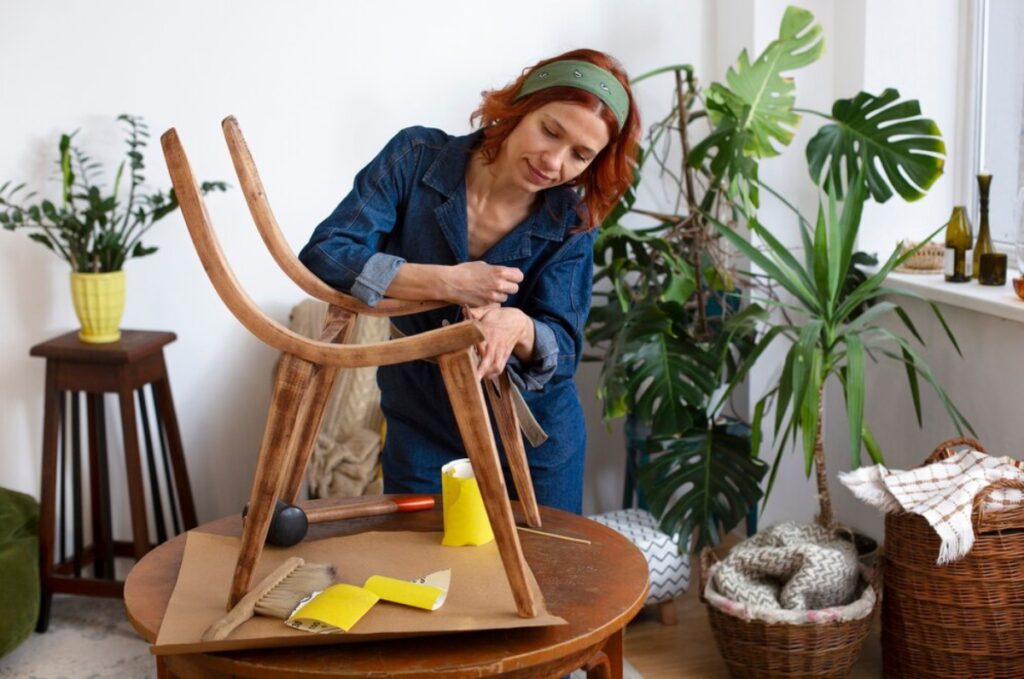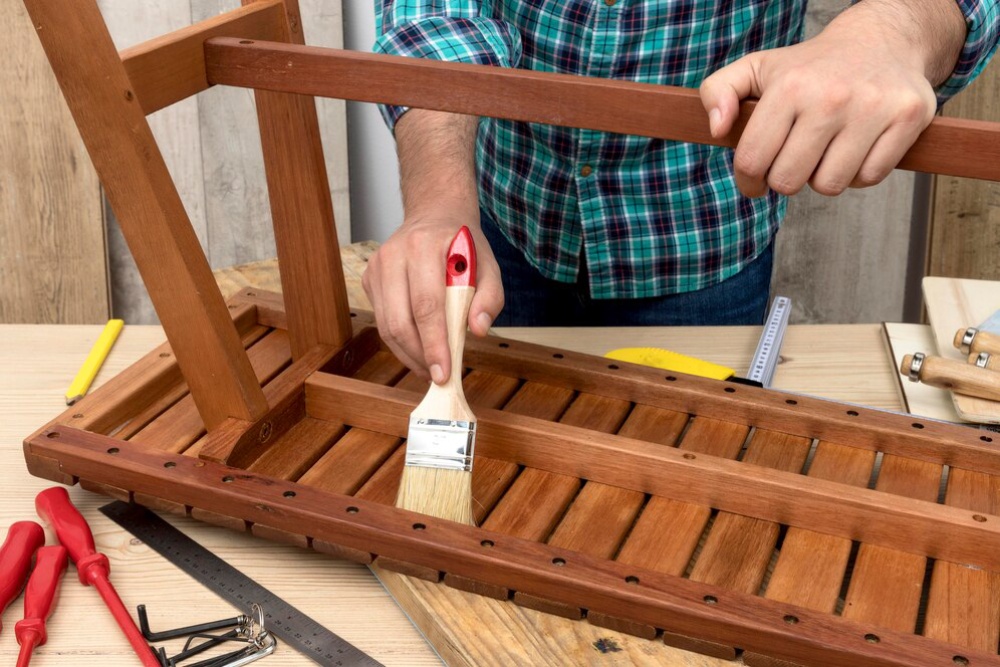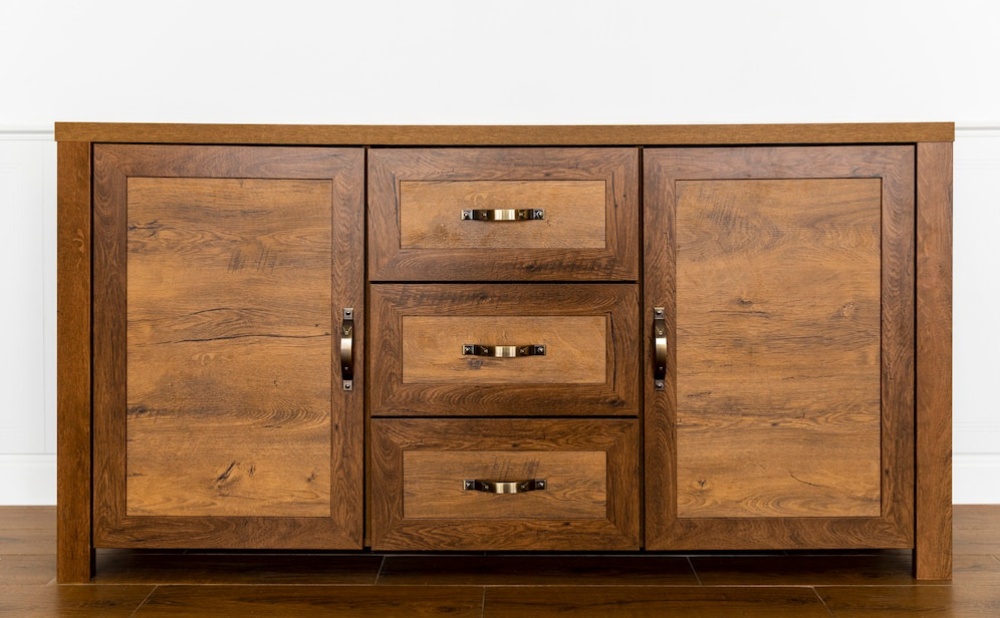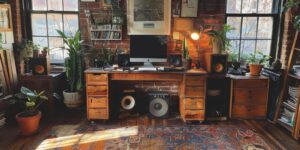The Interior Design Blog

Upcycling Old Furniture: A Beginner’s Guide
Upcycling isn’t just a trend. It’s a funky, eco-friendly way to revamp old furniture—and it’s cost-effective! With upcycling, you put your stamp on an old chair or a boring dresser. This guide walks you through the nuts and bolts, from benefits to pragmatic steps and innovative ideas for your furniture flip.
The Benefits of Furniture Upcycling
Environmental Impact
Environmental impact is one of the significant reasons for upcycling. Each year, millions of pieces of furniture end up in landfills. Repurposing old items helps reduce waste and lessen the demand for new resources.
Upcycling also reduces the carbon footprint linked to making and transporting new furniture. The Environmental Protection Agency (EPA) reports that furniture waste in landfills has recently risen to over 12 million tons. Choosing to upcycle supports a more sustainable, circular economy.
Cost-Effective Creativity
Upcycling lets you create custom furniture without spending a fortune. Instead of buying new items, you can repurpose what you have or find inexpensive second-hand pieces. Great finds are often at charity shops, car boot sales, flea markets, and online platforms like Facebook Marketplace and Gumtree.
Additionally, upcycling provides a budget-friendly way to dive into interior design. You can refresh an entire room without overspending, and each upcycled piece can match your style.
Personal Satisfaction and Skill Development
Transforming tired furniture into something stylish is incredibly rewarding. The satisfaction of giving new life to old items is fulfilling.
You’ll learn valuable DIY skills like sanding, painting, and upholstering as you work. These skills can enhance your hobbies or become a side hustle or small business.
Getting Started: Tools, Materials, and Mindset
Essential Tools You’ll Need

Before starting your first project, gather some essential tools:
- Screwdrivers and pliers
- Hammer and nails
- Sandpaper or an electric sander
- Paintbrushes and rollers
- Drop cloths or dust sheets
- Measuring tape and level
- Wood glue and clamps
- A dust mask and gloves for safety
These tools are key for most beginner projects. You might want to invest in a power drill, jigsaw, or upholstery stapler as you improve.
Materials to Keep Handy

Your toolbox should also include:
- Paint (chalk, spray, or acrylic)
- Primer and sealant
- New hardware (knobs, handles, hinges)
- Upholstery fabric and foam (for chairs and sofas)
- Wood filler for fixing holes or dents
- Stencils or decals for added flair
Keep spare clothes, masking tape, and a small brush set for touch-ups. A well-stocked kit will make your projects more manageable and more enjoyable.
Mindset Matters
Start small. To build confidence, your first upcycling project can be simple—like a side table or wooden chair. Remember, mistakes are part of learning.
Approach upcycling with curiosity and patience. Give yourself time to experiment and find your style. Whether you prefer farmhouse chic, industrial edge, or boho vibes, your unique touch adds character.
Transforming Furniture: Practical Considerations
When selecting a piece to upcycle, look for sturdy construction and sound design. Solid wood furniture is best, especially if it’s free from significant damage. Avoid items with woodworm or severe water damage unless you’re ready for a challenge.
Old dressers, coffee tables, and bookshelves make great projects. They’re versatile, easy to work on, and full of creative possibilities.
Clean and Prep Thoroughly
Cleaning and prepping the surface is crucial. Before you get artistic, scrub the furniture to remove dirt and grease. A mix of warm water and vinegar or a degreaser works well.
Sanding is often necessary to smooth the surface and help new paint or finish stick better. For varnished or glossy surfaces, sanding is essential. Use 120- to 220-grit sandpaper based on the material.
Choosing the Right Finish
Painting is the easiest way to refresh an item. Chalk paint is popular for its matte finish and ease of use, while spray paint offers a clean, modern look. For a high-end finish, consider satin or gloss acrylics.
Remember to prime first—this helps the paint stick and prevents bleed-through from stains, especially with darker wood. Seal your final piece with wax, polyurethane, or clear lacquer to protect the finish.
Personalise with Creative Touches
Add your flair with new hardware or creative techniques like:
- Stenciling for artistic designs or quotes
- Decoupage with patterned paper or fabric
- Distressing edges for a rustic look
- Gilding or gold leaf for luxurious accents
- Two-tone painting for contrast
These techniques let your piece reflect your taste, making it a true conversation starter.
Popular Upcycling Ideas for Beginners
Repainted Dressers

Old dressers are perfect for a DIY furniture makeover. Paint them bold colours—navy, forest green, or mustard—and add new knobs in brass, ceramic, or wood. Use each drawer front as a canvas for different patterns, or try colour-blocking for a modern twist.
Bookshelves with a Twist
Transform a basic bookshelf into a stylish storage unit by painting the interior a contrasting colour, adding wallpaper to the back panel, or converting it into a bar cart. Floating shelves can also be repainted or stained to match your room’s theme.
Repurposed Coffee Tables
Give a scratched or outdated coffee table a new top (tile, glass, or decoupage) and a fresh coat of paint. For a farmhouse style, think about distressing the legs. You can even add castors for mobility or storage baskets underneath.
Chair Makeovers
Reupholster dining chairs with modern fabrics, or repaint and re-cushion an old armchair. Even a simple new fabric cover can make a significant impact. Mix bold textiles with neutral frames for balance.
Cabinet Conversions
Old cabinets can become bathroom vanities, media centres, or even kitchen islands with some creative vision and the right tools. Add a stone or butcher block top, install a sink, or include wine racks for extra function.
For a Successful Furniture Upcycling Project
Prep is Key
Invest time in cleaning, sanding, and priming. These steps ensure a professional-looking finish that lasts. Skipping prep may lead to peeling or uneven results.
Choose the Right Materials
Always use furniture-appropriate paints and finishes. This prevents issues like chipping or uneven coverage. Don’t skimp on brushes—cheap ones can leave streaks or shed bristles.
Start Simple, Dream Big
Pick projects that match your skill level but allow for creativity. A small side table or stool is great for beginners. As your confidence grows, you’ll naturally move to more complex makeovers.
Embrace Imperfection
Upcycled furniture isn’t meant to look factory-perfect. Minor flaws or unique finishes add character. Don’t stress over little mishaps—they make a piece even more special.
Learn and Evolve
Every project teaches you something new. Don’t hesitate to try different styles, techniques, or colours. It’s all part of the creative journey. Take photos of your work to track progress and inspire future ideas.
Common Doubts
What types of furniture are easiest to upcycle?
Wooden chairs, Small tables, Dressers, Cabinets and Bookshelves
Where can I find furniture to upcycle?
Charity shops, Car boot sales, Online classifieds and Freecycle and community swap groups
Embrace the Vintage Charm
Siege has been empowering the Furniture-upcycling experience! It reduces waste, saves you money and allows you to make a statement with your decor in ways mass-produced furniture can’t. You can transform plain coffee tables or create bold statement pieces as your imagination dictates.
Upcycling inspires a more intentional engagement with our belongings. Rather than throwing things out, we learned to see the possibility. This shift in mindset is sustainable and creatively rewarding.
This time of year is prime DIY furniture makeover season. If it matters to you to be environmentally friendly, save money or want to get crafty, there’s something here for you. “Every scratch and imperfection tells a story. But with the proper tools and imagination, you can turn that old furniture into a favourite.
So, are you ready to start your first upcycling project? Take that piece you forgot in the attic and make it beautiful again.









